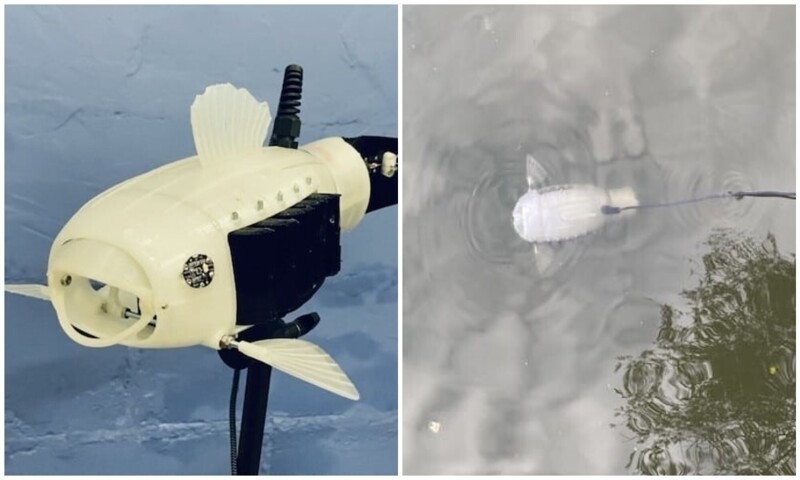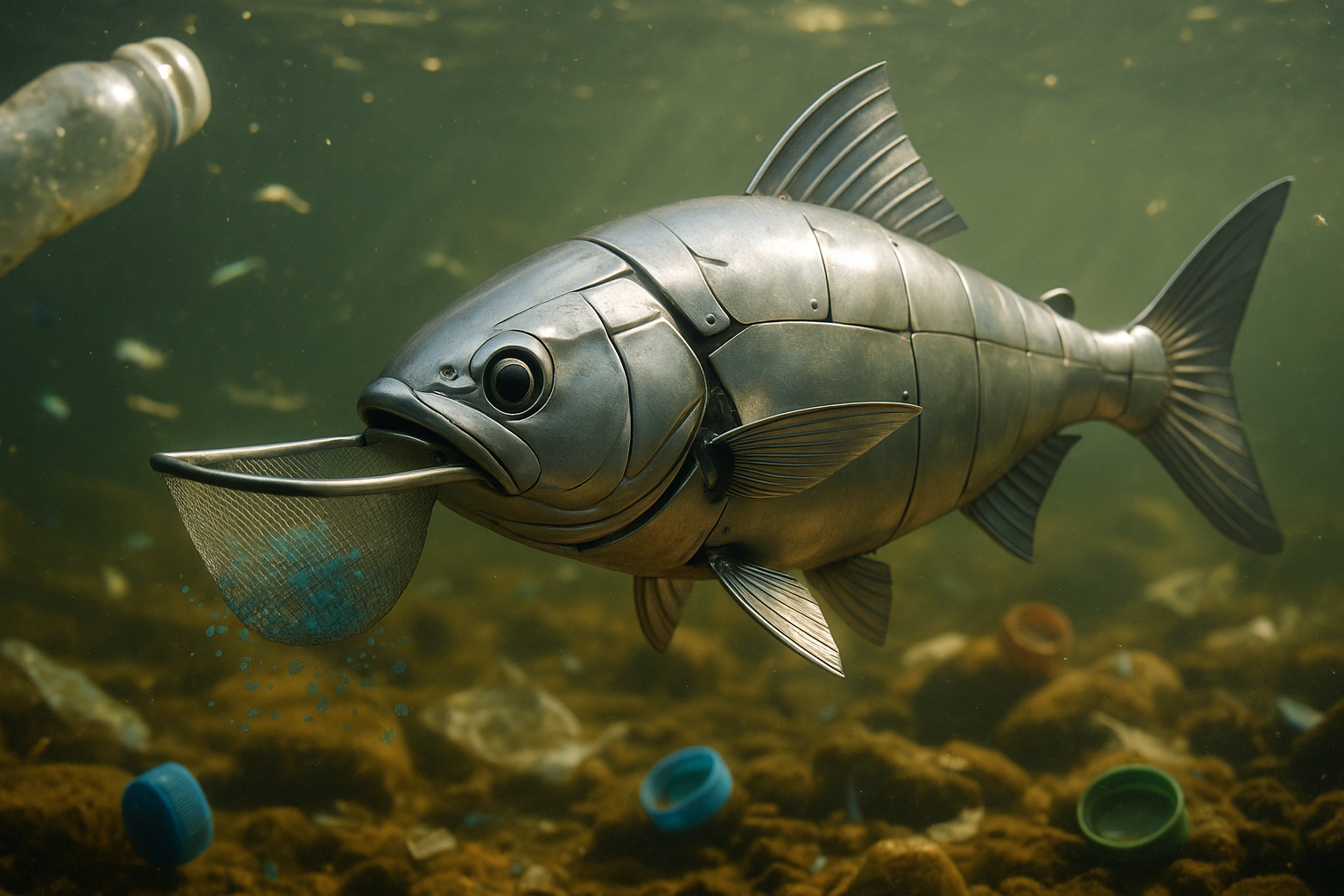In an age of mounting environmental challenges, one student’s invention a small yet powerful robot fish is making a big splash in the fight against plastic pollution. From campus innovation to ocean saving hero, this aquatic robot is not just a marvel of engineering but a symbol of hope for our planet.
Plastic pollution has long haunted our waterways, with microplastics now found in everything from the food we eat to the air we breathe. But the emergence of robot fish like Gillbert could mark a significant turning point in our war against plastic.
University of Surrey Student Builds Gillbert the Robot Fish
The story begins at the University of Surrey, where a bright and environmentally conscious student named Samantha Gibbs decided to tackle plastic pollution in an unconventional way. As part of her final year project, Samantha conceptualized and built Gillbert, a lightweight, fully autonomous robot fish capable of collecting microplastics from rivers and oceans.
Gillbert was designed to mimic the natural swimming motion of real fish, but with one key difference it carried a fine mesh filter inside its mouth that trapped microplastic particles as it glided through the water. Unlike many previous efforts that focused on surface level plastic removal, Gillbert was engineered to go deeper literally and figuratively. This robot fish quickly gained attention, not just for its clever design, but for its environmental impact and scalable potential.
A New Frontier in Eco Robotics
Dr. Helen Norman, an environmental engineer and robotics expert from King’s College London, calls Gillbert a compelling example of youth driven eco robotics. Gillbert showcases how robotics can be biologically inspired and environmentally responsible at the same time. It’s small innovations like these that evolve into global solutions, Dr. Norman said in an interview with EcoTech Journal.
She points out that microplastic cleanup has often been neglected in mainstream sustainability discussions due to the difficulty of filtering such tiny particles without harming aquatic life. Gillbert offers a non invasive solution, collecting plastic without disturbing marine organisms a common problem with earlier technologies.

How Does the Robot Fish Work?
Gillbert operates using a microcontroller, sensors, and a propulsion system that allows it to mimic a real fish’s movement. Its flexible tail helps it glide through water silently and efficiently. Autonomous navigation It can swim on pre programmed paths and adjust course based on water currents.
Mesh filtration: A fine net inside its mouth captures microplastic particles (typically under 5mm in size).
Data collection: It records environmental data like pH levels and plastic density, aiding further research.
Unlike drones or boats, this robot fish can access tight, shallow, and murky waters, making it perfect for polluted urban rivers and estuaries.
A Student’s Mission Turned Movement
In a TEDx Youth Talk, Samantha shared her inspiration behind Gillbert. Growing up near the River Thames, she witnessed firsthand how industrial and domestic waste polluted local water. Every time I saw fish struggling in murky waters, I felt a deep responsibility. Gillbert was born out of that helplessness turned into hope through engineering, she said.
Samantha’s project didn’t stop after graduation. She collaborated with local councils in the UK to deploy pilot versions of Gillbert in small canals. The response? Remarkable. Within just two weeks, each robot fish collected over 2,000 microplastic particles, many of which were otherwise invisible to the naked eye.
Why Gillbert Matters: Beyond the Tech
What makes Gillbert exceptional isn’t just its technology it’s the mindset shift it inspires. This robot fish represents a future where youth led innovation meets real world impact. It’s also proof that sustainability doesn’t always need billion dollar funding sometimes, it begins in a university lab. Gillbert also raises questions about policy integration.
Could governments fund similar eco robotic projects? Should environmental agencies adopt this technology at scale? As interest in Gillbert grows, several NGOs and environmental startups are exploring open source versions of the robot fish to replicate it across Asia and Africa where plastic pollution hits hardest.
Scaling the Robot Fish Movement
While Gillbert is still in its early stages, its implications are far reaching. According to UNEP, over 11 million metric tons of plastic enter oceans annually, and that number is expected to triple by 2040. If even a fraction of that can be intercepted by devices like robot fish, we’re talking about saving thousands of marine species, cleaning drinking water sources, and even protecting human health.
Industry analysts also believe that Gillbert could inspire the next generation of bio mimicry in robotics, not just for pollution control but in agriculture, search and rescue, and marine biology research.
A Small Fish Making a Big Impact
Gillbert isn’t just a student project it’s a symbol of possibility in a world overwhelmed by environmental challenges. It shows us that robot fish can be more than just machines they can be allies, quietly swimming against the tide of destruction.
As we confront climate change, pollution, and ecological collapse, it’s innovations like Gillbert that remind us of the power of human creativity, especially when guided by empathy, intelligence, and a deep love for our planet.

